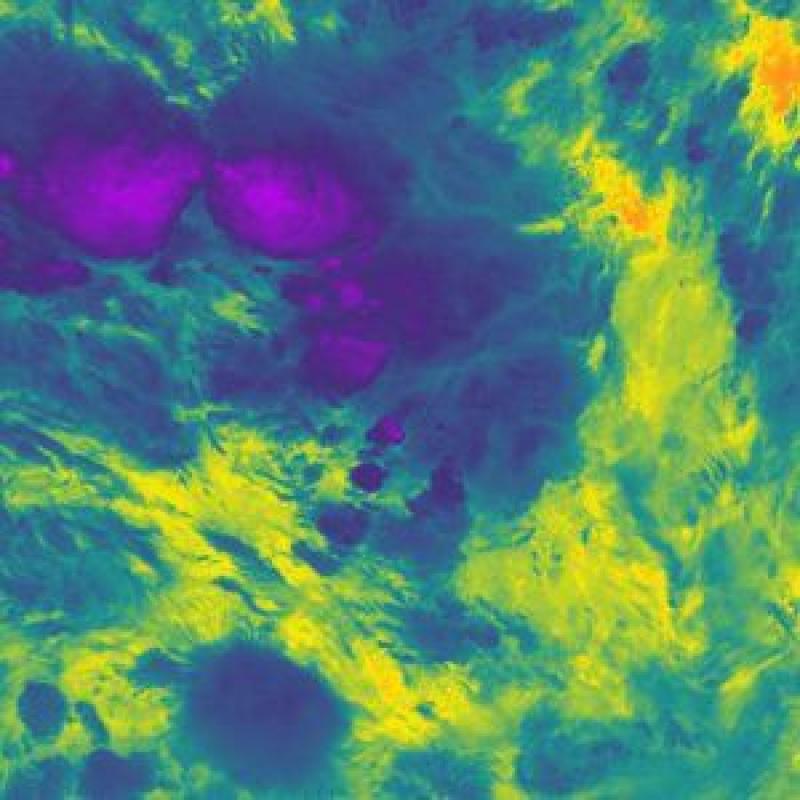Scientists detect world's coldest cloud hovering over Pacific Ocean
By: Yasemin Saplakoglu (livescience. com)


Posted for those who do not believe the climate is changing and for those who believe climate scientists understand how the climate is changing.

A severe thunderstorm cloud that formed over the Pacific Ocean in 2018 reached the coldest temperatures ever recorded, according to a new study.
The very top of the storm cloud reached a bone-chilling minus 167.8 degrees Fahrenheit (minus 111 degrees Celsius), colder than any storm cloud measured before. Thunderstorms and tropical cyclones, a circular low-pressure storm, can reach very high altitudes — up to 11 miles (18 kilometers) from the ground — where the air is much cooler, according to a statement from the U.K.'s National Center for Earth Observation.
But this new temperature is on another level. The top of the storm cloud was about 86 F (30 C) colder than typical storm clouds, according to the statement. The beast of a storm loomed about 249 miles (400 km) south of Nauru in the Southwest Pacific on Dec. 29, 2018, and its clouds' temperature was picked up by an infrared sensor aboard the U.S.'s NOAA-20 satellite orbiting the planet.
Storms typically spread out into an anvil-like shape when they reach the top of the troposphere, the lowest layer of Earth's atmosphere. But if a storm has a lot of energy, it will shoot into the next layer, the stratosphere. This phenomenon, known as an "overshooting top," pushes storm clouds to very high altitudes, where it's bitterly cold.
Overshooting tops are "reasonably common," lead author Simon Proud, a research fellow at the National Centre for Earth Observation and at Oxford University told the BBC. Typically, an overshooting top cools by about 12.6 F (7 C) for every kilometer it rises in the stratosphere, he said.
But this storm was particularly extreme. "This storm achieved an unprecedented temperature that pushes the limits of what current satellite sensors are capable of measuring," Proud said in the statement. "We found that these really cold temperatures seem to be becoming more common."
In the last three years, scientists have logged the same number of extremely cold temperatures in clouds as they did in the 13 years before that, he added. "This is important, as thunderstorms with colder clouds tend to be more extreme, and more hazardous to people on the ground due to hail, lightning and wind."
This particular storm may have been energized by a combination of very warm water in the region and eastward-moving wind, according to the BBC. However, it's not clear why these colder temperatures in storm clouds are becoming more common.
"We now need to understand if this increase is due to our changing climate or whether it is due to a 'perfect storm' of weather conditions producing outbreaks of extreme thunderstorms in the last few years," Proud said.
The findings were published March 22 in the journal Geophysical Research Letters.
Originally published on Live Science.




We're entering uncharted territory and there be monsters here.
I still contend that warming the planet will ultimately result in onset of another ice age. And ice ages are responsible for more climate disruptions than warmer periods.
So like they explain in "Day After Tomorrow"? I wondered if there were any potential "truth" to it, but at a much slower rate than a movie portrays.
Well, it's really not rocket science.
The Earth is a water planet and water regulates heat in the climate. Water absorbs heat at the planet's surface and then rises in the atmosphere where the heat is released and dissipates. These monster storms allow large amounts of water to rise very high in the atmosphere and transfer a large amount of heat from the surface to the upper atmosphere.
We know there have been ice ages where thick sheets of ice covered large portions of the land surface. How did that ice get there? Did water cover the land surface and freeze? No, water was transferred through the atmosphere and deposited on the land surface.
The argument is that it took a really long time for the ice sheets to form. That's true. But the reason it took so long is because the amount of available heat was less than today.
May not be rocket science, but science nonetheless and I was always pretty inept in the subject of science. I'm a good researcher and I pay close attention to detail, but I've never been one to be very scientific.
We're in an inter-glacial period...they could return
Well, we aren't changing how weather works or how the water cycle works. We're not even changing how the carbon cycle works.
What we are changing is how fast things happen.
Back in 1990 a super cell thunderstorm produced an F3 tornado and wiped out the small town of Limon Colorado.
The weather service estimated that it topped out near 70,000 feet. The storm was isolated and easily seen from Denver